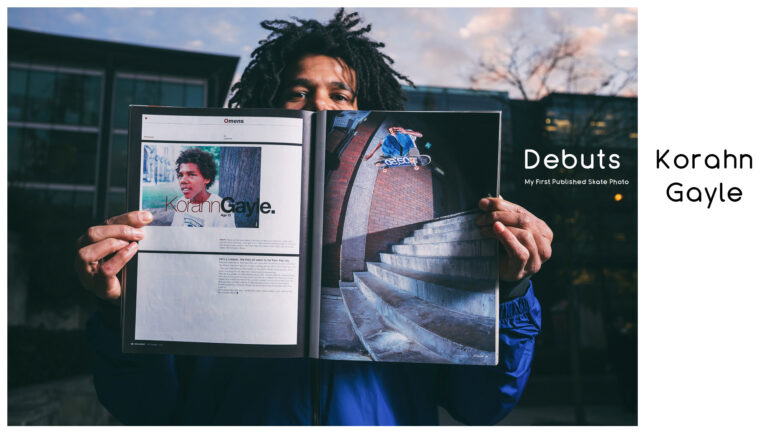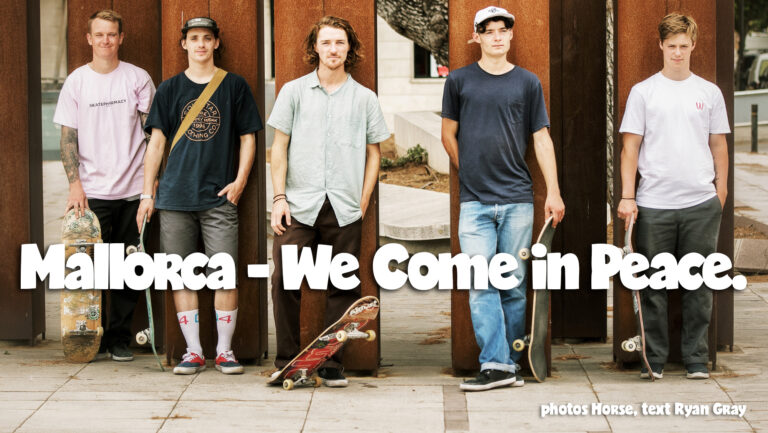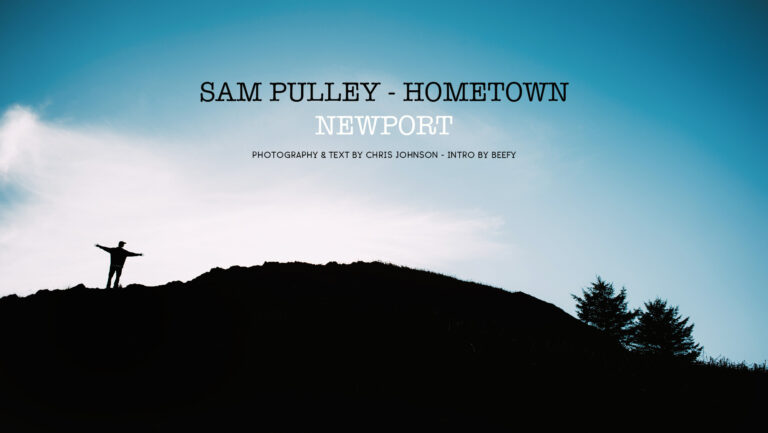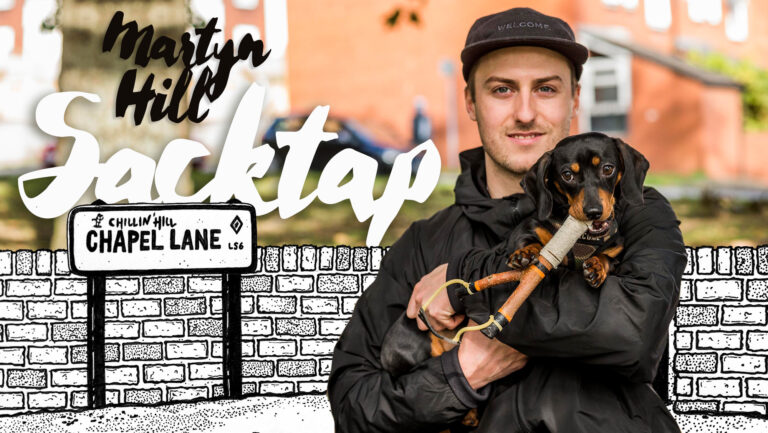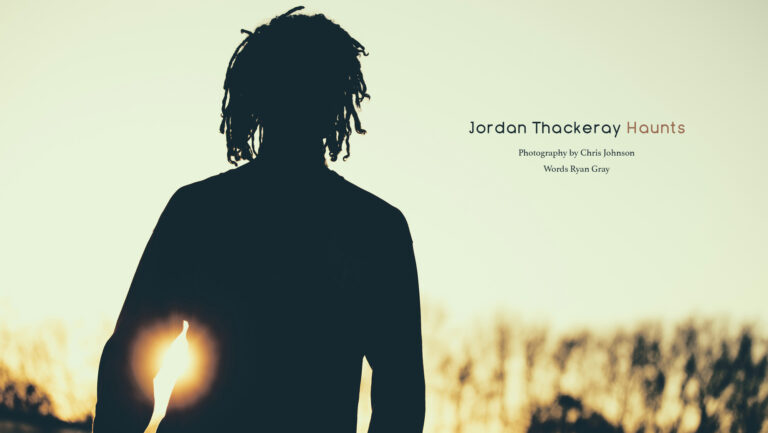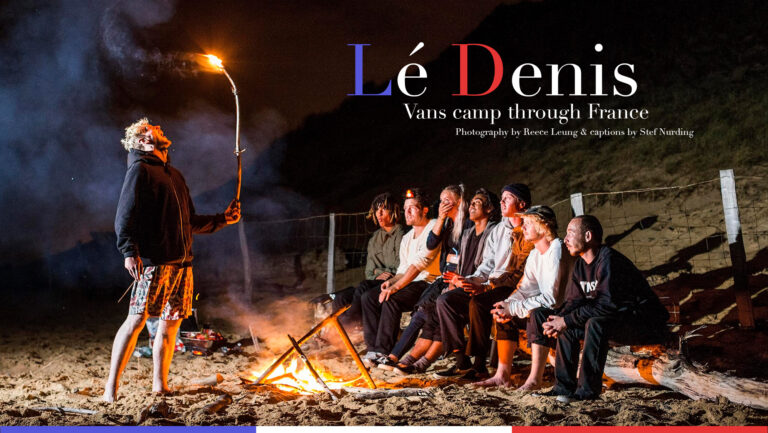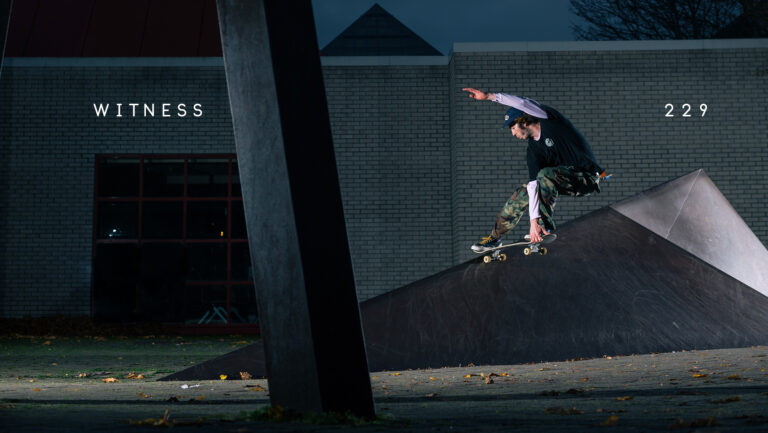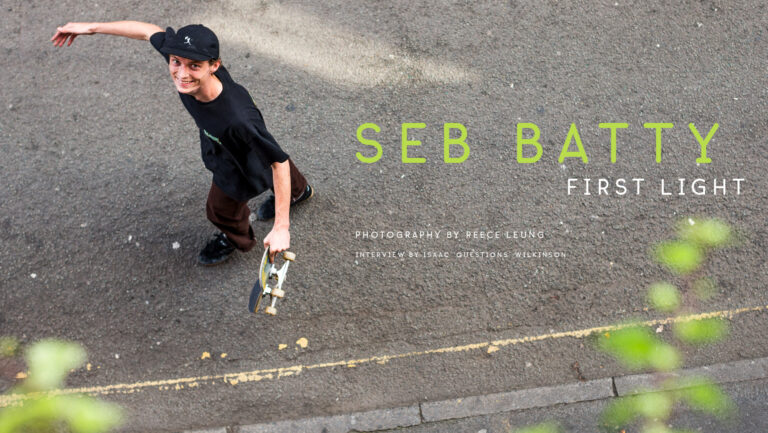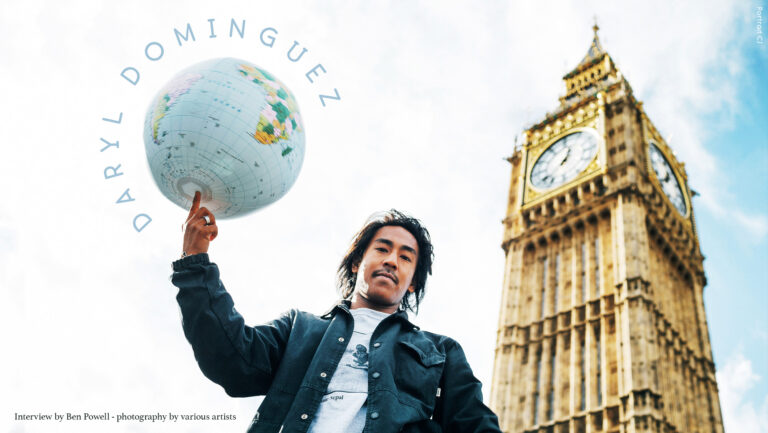Daryl Dominguez – Interview
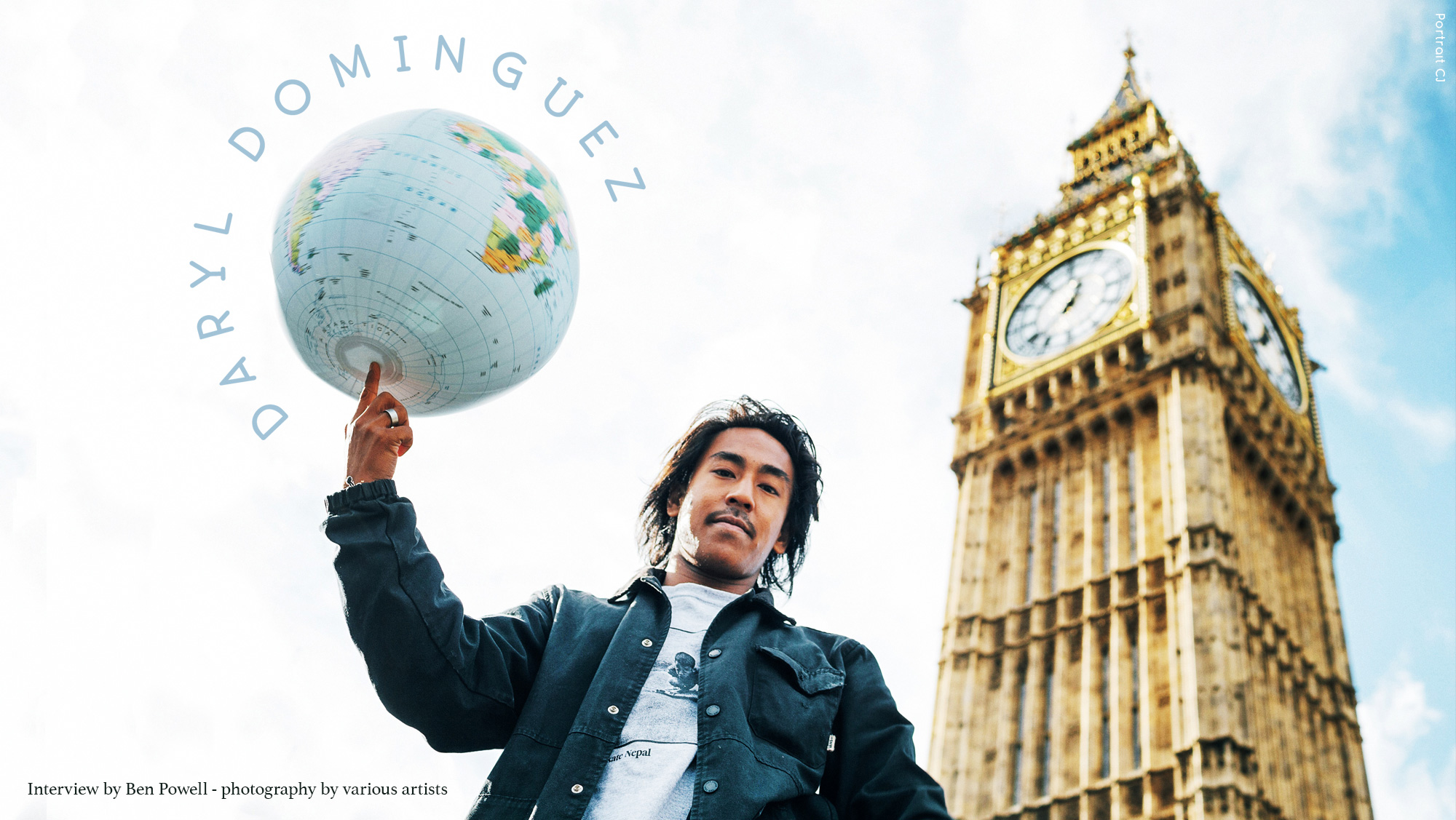
Long time Sidewalk pal and intrepid explorer Daryl Dominguez recently joined forces with a group of fellow skateboarders to create a non-profit organization to help promote and nurture the nascent skateboarding scene in Nepal.
From humble beginnings, Skate Nepal has now reached its first funding target and Daryl’s plans (which you can read more about below) to extend the current skatepark in the base-camp town of Pokhara, Nepal look set to come to fruition in the latter part of 2017.
We caught up with Double D via Skype in Thailand where he was being typically productive, filming for a Bangkok-based video project before heading off to Australia to work on fruit farms and skate during the British winter.
Read on to hear how you can get involved with Skate Nepal yourself, and absorb some inspiration from one of the most genuinely positive human beings that we know.
Bravo Daryl!
You’re currently talking to me on Skype looking pretty haggard and you’re in Bangkok, Thailand, with Dylan Hughes and Nick Richards – is that right?
That’s correct. Especially regarding the ‘looking pretty haggard’ bit. We’re staying at our friend Tina’s place over here; she’s been hooking us up.
So, other than staying up all night on the demon drink – what are you three doing in Bangkok?
We’re working on something together based around ‘nocturnalism’ in Bangkok – basically trying to skate all the spots in the city at night. We’ve been nocturnal for the last 8 days or so – getting up at 4pm and then skating from 10pm till 6am every night for a week.
That’s your excuse for looking haggard then?
(Laughing), well I’m not going to lie, skating all night in Bangkok and drinking do tend to go together but we haven’t really been getting any sunlight either, which messes with your body. We took a day off yesterday because we’ve been hammering it skate-wise and…well, I’m not going to say where we went, but we treated ourselves let’s say, which probably explains why I look so bleary-eyed right now.
You’ve been to Thailand before, haven’t you?
Yeah, I came out here on a Red Bull trip with Nick (Richards), Justin Strubing and Clint Peterson a few years ago. Since then I’ve been back plenty of times as I’ve got some connections in Bangkok now.
There’s a big skate scene there right? Preduce Skateboards are from Thailand aren’t they?
Yeah that’s right, there’s a huge skate scene here; Preduce are based here in Bangkok. They just refurbished their skate shop actually – there was a big free beer party there the other night that we went to.
Is that where the indoor mini ramp that’s on your Insta feed is?
No, that’s ‘Skate Café’, (laughs). I sent that over to Rich Smith (from Skateboard Café in the UK) before. That’s a local place – just a bar that sells beer and nice food that also happens to have a pool table and a mini ramp in it. That place is a guaranteed good time.
Tell us about the skate scene in Bangkok.
Preduce smash it – they’ve put out at least ten skate videos over the last few years. There are also a lot of skateparks in Thailand that I wasn’t aware of on previous trips. We went to one last night that was of a really high standard – like a good UK or European skatepark. There were loads of skaters there; people were going off. The other thing with Bangkok is that it gets a lot of international visitors too, so the skate scene is a good mix between Thai people and general globetrotters over here on working visas.
What’s it like street spot wise?
There are a lot of spots but it’s a godsend that we’re doing this nocturnal project to be honest because most of the spots are heavy busts during the day, and the heat here is so intense that you struggle to actually skate in the day time; the humidity is nuts. We’ve found some really interesting spots through exploring at night. Coming from London where there’s such a wide array of spots – everything from brand new corporate stuff to crusty ancient shit – it’s sort of similar here. You can get a bit ‘GX 1000’ by just blasting through the streets, plus the way that the city is lit at night, that’s where the idea for shooting this thing came from. Kind of the aesthetics of Bangkok at night, if that makes sense?
It’s a 24-hour city though isn’t it?
Nah, aside from the bar districts, most of the city closes by about 4pm – it’s always busy though and there are always people around, but a lot of the security shuts down on some of the newer buildings so that you can skate them at night for three or four hours without getting booted.
What’s the general attitude towards skating there? Aren’t the security guards and police armed?
Yeah some are, but the general perception of skating seems to be more confused than confrontational in the main. We’ve come across some security and police who were cool with it, and we’ve had other interactions where it was pretty clear that we needed to bounce immediately. It’s a mix really…just like anywhere else. A lot of the ‘perfect’ spots are obviously in malls or near corporate headquarters or whatever, so just like in the UK, those are usually busts but you can work around it. We’ve been finding a lot of crusty stuff at the sides of the roads, under bridges and all that – lots of rugged banks and whatnot. There’s a good mix. Aside from the heat it’s not that dissimilar to skating in London really.
How long are you staying for?
Well Dylan and Nick will have left by the time this comes out so I’m just trying to work out how long I’ll stay for after that. I have a working visa for Australia and I’m going to go there around Xmas time. Before that I might go to Malaysia or Indonesia for a week as they’re near to Bangkok and those are two countries that I’ve never been to. I need to get some nature really; being in Bangkok has sucked out all the natural, organic stuff flowing through my body because I’ve hardly seen the sun whilst I’ve been here. I didn’t understand how real that was until we did ten straight days of getting up at 4pm in a place where it’s pitch black by 6pm – you feel the effects of no sunlight pretty quickly.
You’re in Bangkok now after being in Nepal working on projects for the Skate Nepal organization that you’re involved in, is that right?
Yeah, I was in Nepal for just over a month – networking, running workshops with kids over there and mixing in a bit of trekking as well. I went up to the Himalayas for a two-week trip. Pretty varied really; it’s a special place.
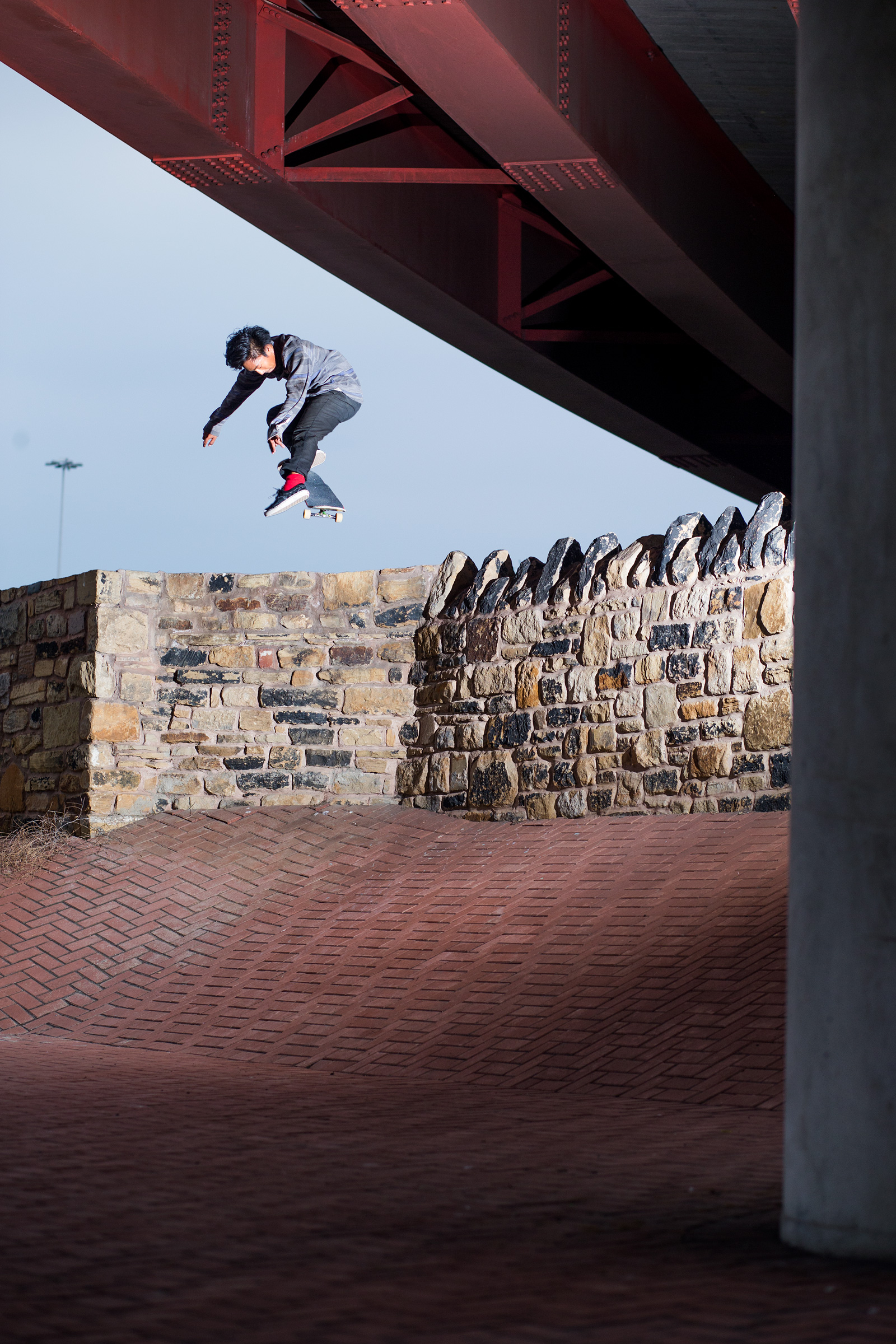
Classic DD ninja feet action as he brings a heelflip into line before the inevitable brickweave rattle out. Photo Reece Leung.
Can you give us a little background on Skate Nepal?
When I first went to Nepal, around this time last year, to do a trek with three of my friends, I found out that there was a skatepark – which at the time was the only one in Nepal – in Pokhara, which is a base-camp town that people set off from to trek in the Himalayas. So I went to the park, which was pretty small with a mini ramp and some DIY bits built from concrete, and met Ram, the guy who built it and runs the park. He told me the back story about how he basically funded it, built it and ran it all by himself.
He works on a hydro-power station so he was finding it difficult to maintain the skatepark. The park back then still had loads of unused land around it, which got me thinking about how I could help him raise money to extend it. We kept in contact and I moved on with my travels, went to Cambodia, Vietnam, the Philippines, and we were talking the whole time. When I got back to the UK I started working out how I could get some fundraising going.
The way it’s grown has been interesting actually, really organic, which is something I didn’t expect. I’d meet people, and through contact with them, other doors would open. I met two guys in London, Tom and Gorab, who had been in Nepal the week before I’d arrived who had met Ram in similar circumstances and who, like me, had wanted to get involved with the Pokhara park. I met Tom through filming with Austin (Bristow) whilst he was working on those Regulate edits – we were out street skating together, got talking about Nepal and things just developed from there.
We figured that the easiest way to go about doing it was to start a non-profit organisation, which is what we did…
So you all started it collectively?
Yeah, that’s right – myself, Tom, Casey Brown and Gorab joined forces. Logistically it’s not as hard as we thought it would be; we’re not a charity though, because if you do things that way then there loads of legal hoops that you need to jump through and things get really complicated. At first that was the plan, until I realised how much of my life would be taken up if we chose that route. I’m still really young and I want the freedom to be able to skate and travel and all that, which wouldn’t be an option if we’d started a registered charity. So instead, we went forwards as a non-profit – that basically means that rather than creating a charity, which receives the donations and then needs infrastructure to redistribute that money, with a non-profit, the money we make is channeled directly into specific projects, like the Pokhara skatepark. So we can just set up a specific project as a Just Giving fundraiser and people who donate are able to see exactly where their money is being spent. It just makes everything more transparent and manageable.
Has your public profile as a ‘known skater’ helped to raise awareness of it?
Definitely – it just kind of gives you a head start. Like Vans were backing it straight away and people within the skate media who know me helped get the word out there. Chris Nieratko who does all the global Vans social media helped us out, Vern Laird from Bones is backing it, so many people have been supportive; big thanks to everyone who gave us a voice. We’ve already hit our fundraising target and we have a month and a half left, so it just shows you that the awareness-raising side of it works.
You’ve done a few other things to raise money too, right?
Yeah, I did a Momo eating contest at Parlour, for example. Momo’s are dumplings that are a traditional food in places like Nepal, Tibet and Bhutan.
And how will that money be spent?
On concrete, laborers and the machinery needed to build, and then eventually on things to sustain the skate community in Pokhara like workshops and whatnot. The first stage is to get the skatepark itself fixed up and extended, which looks like it’ll be happening around October of 2017.
And you’re planning to go out again and be involved hands-on, right?
Yeah, absolutely. I’ve been working on ramp jobs with Pete King and King Ramps since I was 16 so I have a fair bit of experience of working with wood, but not with concrete. That’s something I need to learn but there are people involved in the project in Nepal who can help me learn that too, which I’m keen on – it’s always good to develop new life skills isn’t it?
Did you take inspiration from what Skate Pal has done?
Definitely. I met some of the people involved in Skate Pal when they released those Dan Clarke boards recently through Parlour, so I have some friends within their organisation. We’re all working on a similar idea so it’s helpful to have people with experience to go to when I’m unsure about certain things, or to get advice on the logistics involved. I 100% back what Skate Pal are doing – it was actually my plan to volunteer to work for them before I travelled to Nepal. Then when the Skate Nepal thing happened I got involved with that so I didn’t get the chance, but I’m aiming to go over to Palestine at some point next year too.
What’s the purpose of introducing and promoting skateboarding to Nepal from your own perspective?
Well it’s already there – skateboarding exists in Nepal as a ‘thing’ but it’s in its infancy. There’s no infrastructure yet though – there are hardly any parks, there are no teams or pros visiting to spark people, and generally most of the skaters are just finding their feet ability-wise. Also there aren’t really ‘spots’ in the way that you or I understand that concept – Nepal is like India in that respect, a lot of the streets are dirt, there are no smooth surfaces to speak of.
The purpose of trying to introduce and promote skateboarding for me is driven by my belief in and experience of how much skateboarding has given to me on a personal level. It sounds almost corny to say it in the West, but skateboarding really does give you a vehicle to be creative and explore the world around you and express yourself socially.
A lot of the kids in Nepal, especially because of the earthquake that happened two years ago, don’t really have that much to do. Many of them lost parents or family members in the earthquake and the country is still struggling to recover from it, so something like skateboarding can provide an outlet to unify those kids and make them feel part of something larger than their immediate situation. In a place like Nepal, a skatepark can mean so much – a place to meet up with friends, a social space to meet new people in, somewhere to escape from normal day to day struggles, all of that. I genuinely think that within that context, skateboarding can be an incredibly life changing thing.
What about logistically-speaking? Do skaters in Nepal have access to product, for example?
Sort of – there are two skateshops in Nepal; one at the skatepark in Pokhara and another one in Kathmandu, but there’s only one distributor in China who supplies them so the product they’re able to get is fairly limited. Then there’s another source for skate product that comes from the people who visit Nepal from across the world. For example there are a lot of Nomad boards over there because the owner of that Spanish brand visited Nepal, saw what they were doing and wanted to help support them. Generally though, it’s difficult to get product there and a lot of it does come via donations. All of the non-profits who work in Nepal recently came together to put on a few events to raise awareness and gather equipment so, slowly but surely, access to good quality boards and whatnot is growing. It’s problematic though because as worthy as charitable donations are, too much of that will make it impossible for the shops to survive there, which in turn will hamper the growth of the scene within Nepal, if that makes sense?
So to give us an idea – have there been instances where you’ve put a workshop on and there have been kids who’ve never seen a skateboard before? Or is Nepal more culturally pervasive than that already?
It’s a mix. I stayed in Pokhara for a week after I’d done my trek and did workshops every day and the majority of those were geared towards kids who had already skated before and knew something about it as a cultural phenomenon, if you like. Pokhara is a really small town but even from just doing those workshops there were probably ten kids who got into skating who knew nothing about it previously. And that’s just me doing it – imagine what you could do if that was extended across Nepal with skateparks and workshops in more places. There’s a charity from Australia called ‘Make Life Skate Life’ who have just built a skatepark in Kathmandu, only a small one with a skateable Nepalese flag with hips and a few quarterpipes, and that’s the best skatepark in Nepal right now. So the field is totally open to develop from this point, you know? That’s been open for a month; before I left Nepal I visited and the place was rammed with kids skating. Basically as soon as a park exists, skaters will form because ‘street skating’ as we understand it isn’t an option.
What’s the perspective on skateboarding as a thing more generally in Nepal? From, say, the parents of the kids getting into it.
It’s hard to say. I think most of them just see it as another form of playing. In terms of kids having a future in it as sponsored skaters or whatever, that’s still completely new and unexplored.
You mentioned that there was one kid who was really naturally talented; can you tell us about him?
Yeah that’s Milan, he’s this Nepali kid who was kind of ‘discovered’ for want of a better term by some Thai skaters who own a company called White Lands. They went over to Nepal and saw Milan skating and were like, “Whoa! This kid’s good”, and started flowing him some boards. A little later on there was this big contest in Bangkok, the same people flew him over for it and he won.
Whoa!
Yeah, exactly. This is a kid from Kathmandu in Nepal where there’s virtually nothing in terms of an established skate scene, entering a contest in Thailand where there’s a huge skate scene, and he came first. He’s really, really good. It’s strange to see somebody progress without any of the stuff you’d assume is necessary in order to do that.
So how has Milan got that good at skateboarding?
I dunno, it doesn’t make sense really. He’d skate the little park in Pokhara a lot and I think he had this routine for a few years where he’d come back from school every day and find a piece of flat and just do five heelflips in a row, five tre flips in a row, etc, etc. So I guess he just taught himself how to do everything on a tiny piece of flat ground near his house and then as soon as there was a skatepark for him to unleash what he’d learned, he got good really fast. Then they flew him out to Bangkok and he won the contest, (laughing).
And then surely with Milan being recognised outside of Nepal already, that’s only going to push the skate scene forwards, right?
Yeah, exactly; he’s set the bar really high from the outset. Bear in mind that the skatepark in Kathmandu where he’s from only had one ledge and two kickers prior to Make Life Skate Life redeveloping it. We held a contest there on the original park and already loads of the kids were doing tre flips out of the kickers, flip 5050s on the block, hardflips, varial heelflips etc, because they’d obviously all seen Milan skating and knew it was possible for them to learn as well. He’s like the seed of it all. He’s a really nice kid too; the kind of guy who would take the time to explain to other kids how to do tricks if they asked.
How old is he?
19 I think. He works as a singer in a karaoke bar too.
What! Hang on a minute Daryl. Are you seriously telling me that Nepal’s version of Tom Penny is also a professional karaoke singer?
(Laughing), yep – it’s amazing isn’t it? That’s pretty much it mate. There are some clips of him on YouTube, search for ‘Milan Shah Thakuri’ and ‘Streets of Kathmandu’. He’s going to get really, really good if he sticks with it, which he will, and he’s going to influence everyone around him to progress. It only takes one dude to spark it. We’ve played SKATE a few times and he made me sweat – he’s got bigflips on lock, a really good tre flip, hardflips; all that shit.
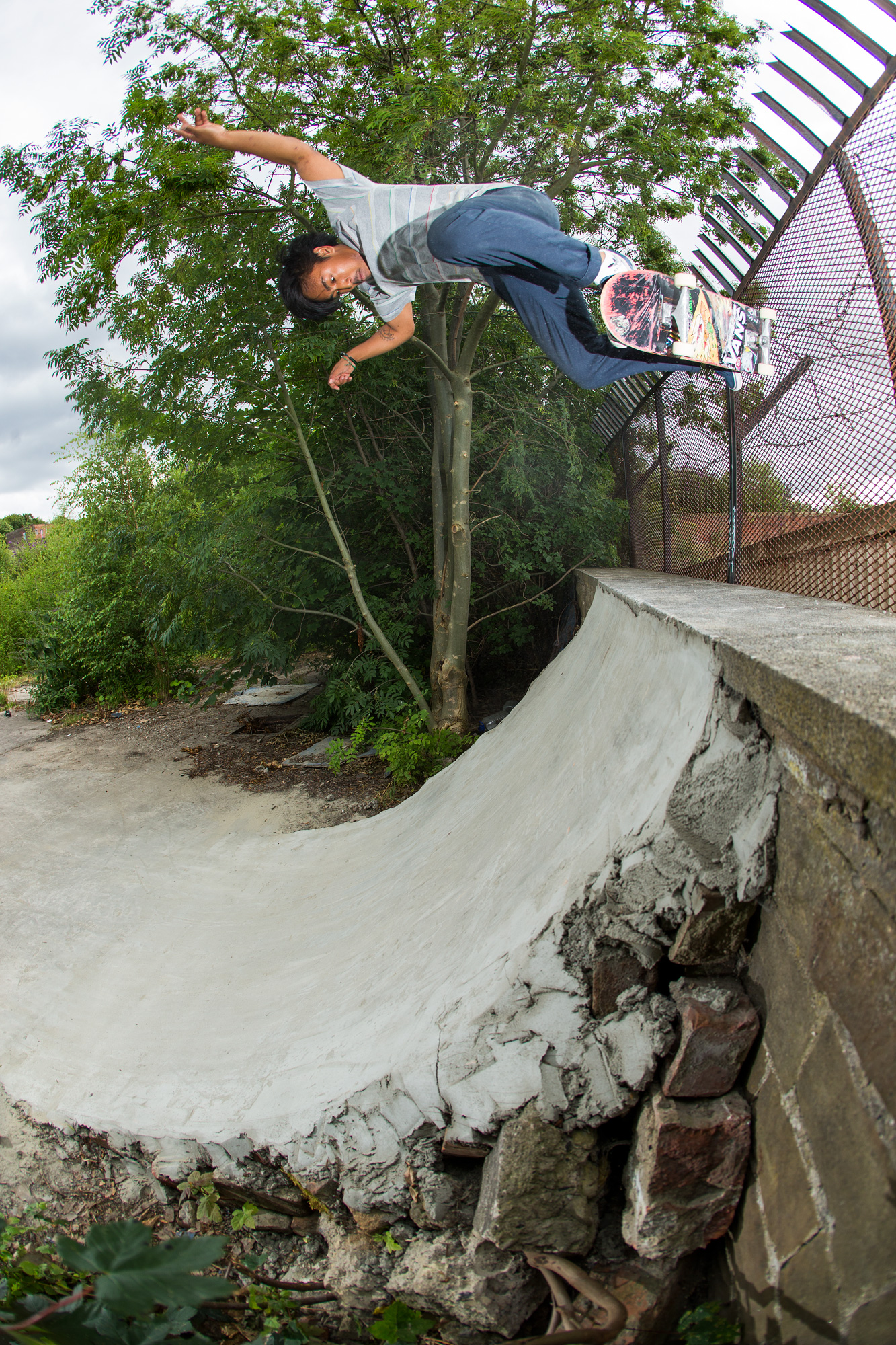
This fence bash pop back in is every bit as gnarly as you are thinking.
Photo Reece Leung.
There’s no 1990’s or 1980’s skate scene in Nepal though, right? The current generation is the first?
Well, arguably Ram, the guy who built the original Pokhara skatepark, is, to all intents and purposes, the first skateboarder in Nepal, and he started in 1998. He told me that when he started he didn’t know any other skaters and he got all of his friends into it. So no, there was no 80’s skate scene at all and virtually no 90’s scene either, so it is a really new culture over there. Ram went to Australia and then came back to Nepal with the intention of building the first skatepark in his country so yeah; he’s the source of it all, pretty much.
What’s the situation with Internet access in Nepal? Is that their window into the wider skateboard world?
Yeah, for countries like Nepal the Internet is so important within a culture like skateboarding, in terms of allowing it to progress. They can be in Kathmandu watching Nyjah skate on the Internet and realise that you can actually do kickflip crook nollie heel out in real life, (laughs). I’d go street skating with them after we’d do workshops at the park and a lot of the time the kids would just stop skating and watch me. I’d try to encourage them to skate as well and that was interesting to see – the etiquette side of skating is all completely new to them too, you know like, “you can skate too”.
Obviously Nepal is a poor country and the earthquake fucked up a lot of the existing infrastructure, so can street skating exist there? Is there the architecture for it to progress like it does in big cities in richer parts of the world?
Honestly, not really. There just isn’t the architecture for street skating like we know it. The surfaces everywhere, even on like University property which is newer, are pretty rough – stone slabs that feel like roofing shingle. We did find some ‘spots’ but it’s not as we know it; the future for progression there is definitely through skate parks. Also, it is so dusty that it can be hard physically to skate in the streets, even if you do find somewhere smooth. My throat was done after three days street skating in Kathmandu. A lot of the kids love to jump down sets of stairs though because architecturally-speaking that is the one kind of spot that they do have. It might have a run up made of dust and no landing surface but there are stairs so they’ll jump down them. There are no rails, and there definitely aren’t any ledges, so yeah, all they know in terms of ‘street skating’ is – learn a trick on flat then go try to do it down whatever set of stairs you can find. And again, this is why skateparks are so crucial in Nepal – whereas in the West we have the choice, they don’t.
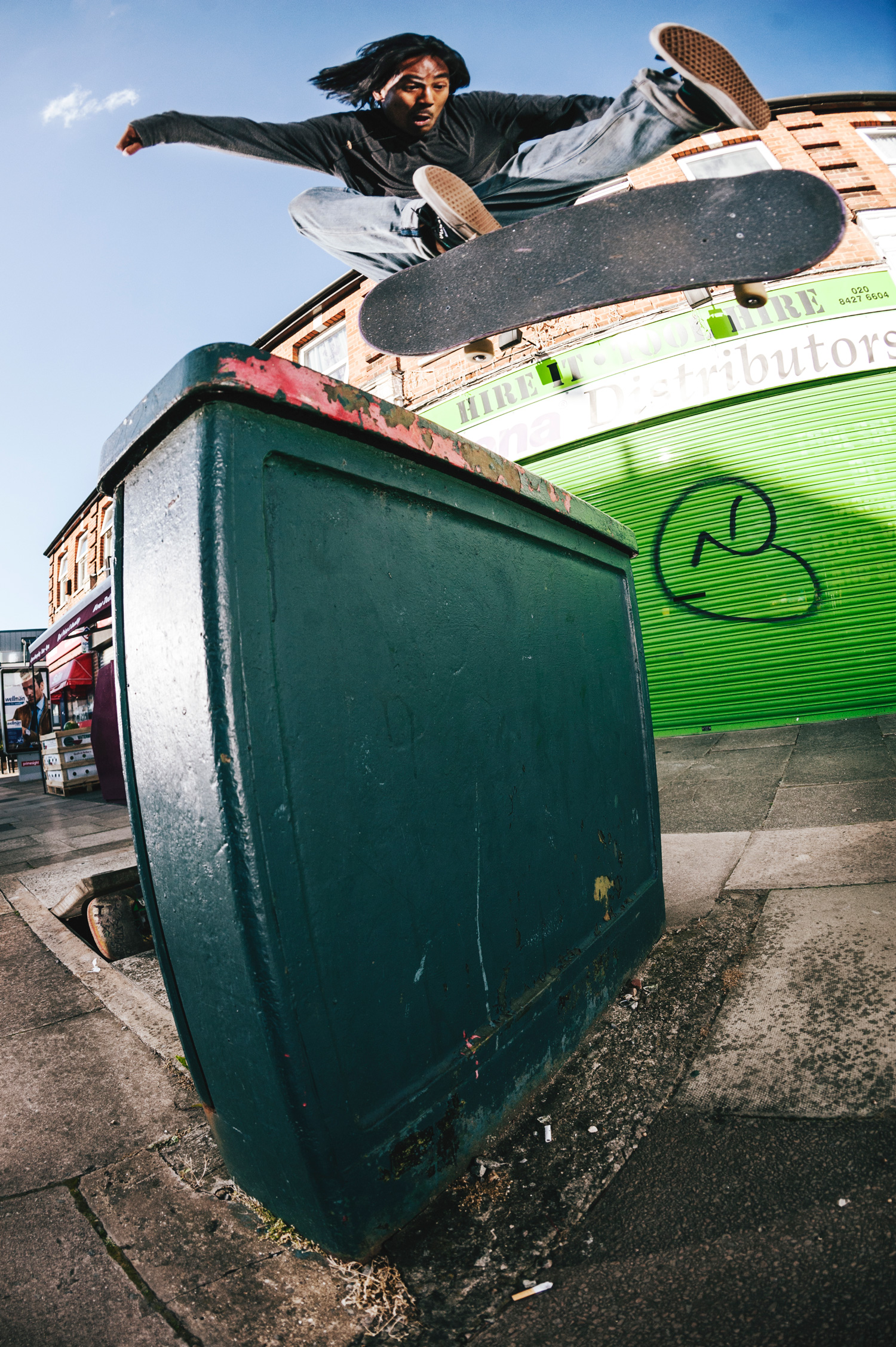
Makeshift kicker to green leccy box with maximum kickflip points. Winner!
Photo Rich West.
Which skaters are the kids in Nepal into then?
A lot of them watch Street League. They love Andrew Reynolds. It’s funny actually, some of the kid’s Instagram names over there will be like ‘Anish Bajur Reynolds’ or something – they’ll idolise certain skaters so much that they’ll use their names. Sometimes when they add you on Facebook, in the bracket bit next to their name they’ll add ‘Reynolds’ or ‘Hawk’ or whatever. Like you do when you’re an innocent kid super hyped on skating. But outside of the obvious ones, it’s mainly Street League guys as that’s what most of them watch.
Have you reached out to any companies or pros yet – to try and get people to go and visit?
Yeah, I’ve been talking to Stu from Lovenskate about it recently because he’s really helped us out with printing up shirts and stickers and I love what he does anyway. He was talking about doing another tour like the one they did to India last year so I’ve suggested going to Nepal to try and tie it in with building the park. The kids there would love that, just to see people rolling through. I guess all it will take is for it to get out there and have one team come, and then who knows? We plan to hold regular contests there in the future once we’ve extended the Pokhara park, so there’s no reason why we couldn’t have a national Nepalese contest with the winner getting a flight to London or wherever, and the opportunity to skate with loads of pros.
Over here we have the luxury of being picky about spots or different types of skating being more culturally ‘legitimate’ than others, but it seems as if over there it’s skateboarding in its purest essence.
Yeah exactly that: just going skateboarding. It’s so raw, I love it. They’re just so hyped all the time, like sometimes we’ll be doing a workshop and there will be kids all asking “I wanna do boned kickflip, how do you do boned kickflip?” (Laughing).
So we’re going to see a bunch of Nepalese kids with Double D style in the future then?
(Laughing), yeah, I’m going to start packaging it soon.
Tell us a bit about Nepal outside of the skateboarding aspect.
It’s a really beautiful place. I’ve always wanted to go to Tibet since I was young but getting to Tibet is really difficult because of the situation with China. Tibet has lost a lot of its cultural heritage and you can’t actually get to it directly; you can’t just fly there, and you have to have an approved guide the whole time that you’re there, assuming that you can even get the appropriate visa to visit.
That means that it’s also really, really expensive so, in order to see the Himalayas, which was the reason for me wanting to go to Tibet in the first place, I decided to go via Nepal instead.
How high up have you been?
This year I went to 5,910 metres above sea level. When you get to around 3,000 metres, you need to stay in one place for two days or so, just so your body can get acclimatised to the altitude. I was up there completely cut off from everything for two weeks. It’s a genuinely amazing experience. You’re constantly surrounded by so much beauty and amazing scenery; you meet fellow trekkers who are on a similar vibe and instantly have a connection. It’s something to do with being completely disconnected from the Internet I guess – people are just more…present, if that makes sense. You meet people, you’re all there for the same reason. I made so many good friends during my time in the Himalayas. It’s magical basically, in a real sense.
People are very respectful up there as well, which is such a massive contrast to my life in London, which is so fast-paced. Everything up there is much more slowed down; you breathe, people give you the time of day and talk to you and actually listen to what you’re saying.
It’s not like they’re obligated to interact with you like in a city. You can learn a lot from that experience I think; as in, a lot of those people don’t have much but they’re really respectful and welcoming and it just makes you consider your own life and the problems that you think you have in a different way.
You’re somebody who does a lot of travelling but it sounds as if that’s a different experience. Case in point being – you’re in Thailand now but we’re speaking on Skype like you’re in London.
That’s it. It’s refreshing. My body and my soul need it. I’ve been working hard for the last year and I just felt like I needed to disconnect from everything for a while and that’s what the Himalayas offer. A much needed experience. I’ve never seen anything quite like that place – I’d recommend visiting to anyone.
So for anyone reading this who is interested in getting involved with Skate Nepal in whatever capacity, what should they do?
The best thing would be to spread awareness yourselves – you can obviously buy the shirts, donate via the Just Giving page and follow us on Instagram @skate_nepal
For anyone who might want to physically get involved in the building aspect, or visit Pokhara, DM me on my Instagram, or via Facebook, or hit up the Skate Nepal Insta. I’m more than happy to get people involved directly. It’s really heart-warming to know that there are so many people out there who are down to help. Even on a more general level, if there are people out there who are interested in visiting Nepal full stop then shout me too and I can hook you up with people to skate with, places to visit, etc, etc.
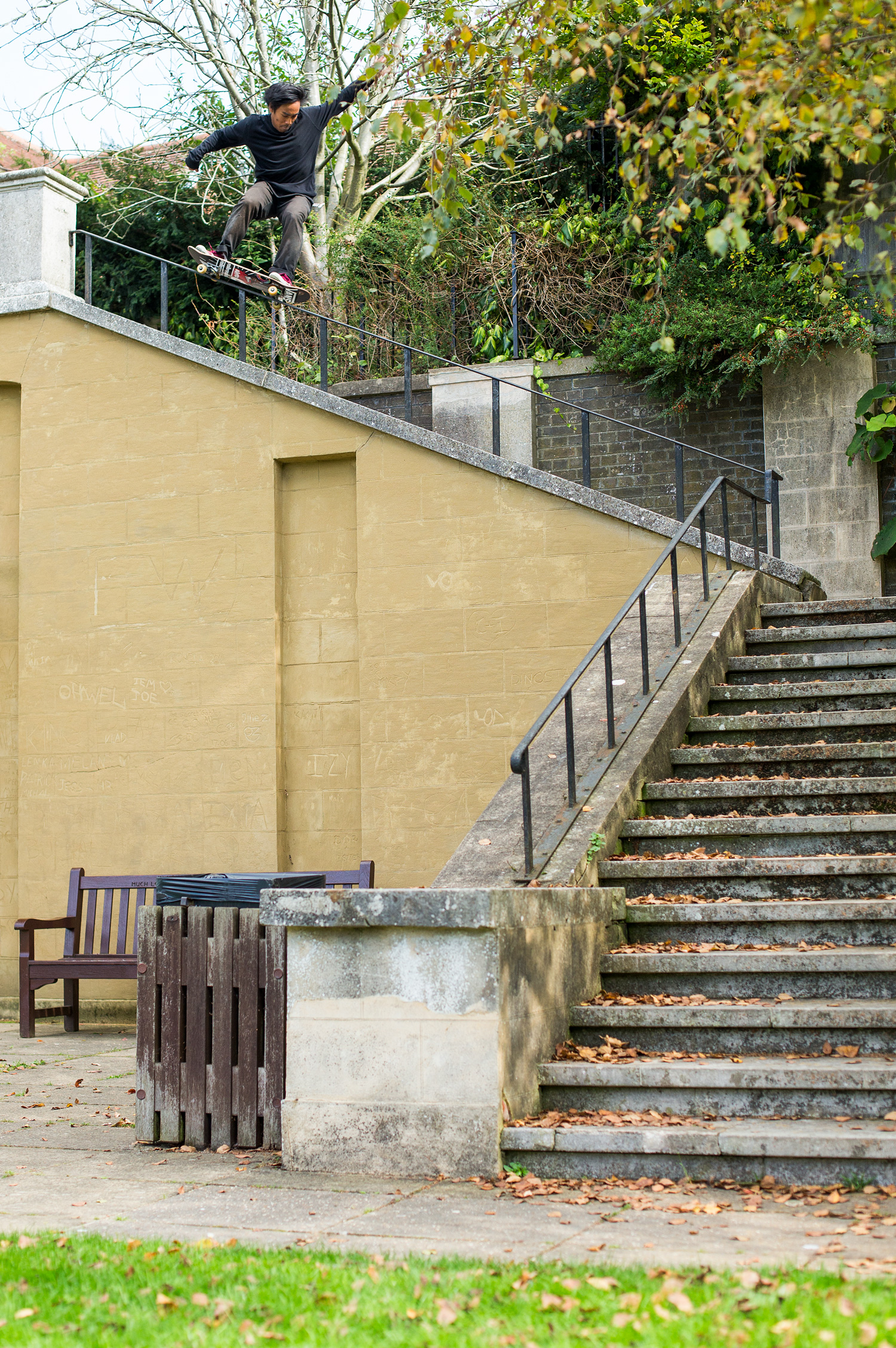
Let this GNARLY 5050 be the cherry on the DD cake. Don’t look down!
Photo Reece Leung.
So what’s next for you Daryl?
I’ve got a one-year working visa for Australia so I’m probably going to stay there until June of next year, then come back to the UK so that I can get involved with all the events and tours that will be happening back home. That’s what I do basically man, because if I was still in the UK right now, there’s no way I’d be this productive. It’s cold, it’s expensive, so I’d have to get a normal job, which would mean that I’d have no time to skate, whereas in Asia, life is so much cheaper, you can live for a lot less. Plus in Australia I’ll be working and in the middle of a new place with a massive skate scene so I can get inspired on that level too.
There’s a huge skateboarding infrastructure in Australia that I can hopefully tap into as well – go filming, meet new people and all that. If I was in London right now I’d be stuck just skating indoor parks for the next four months.
It’s not as hard as people think is it? To go and do something similar to what you’re doing I mean…
Nah, not at all. It’s expensive, but beyond that it’s pretty easy. If you have a British passport you’re laughing really. You have to pay for the working visa but I got mine without any hassle – filled out the forms, submitted it and got an email back with the visa approved immediately. I’ll work a bit, hopefully get involved in some farming so that I can learn more about self-sufficiency, then come back to the UK when the weather’s better. I’m keen to get involved with some fruit farming, firstly because in order to get a second year visa you need to have worked 90 days in agriculture whilst you’re in Australia, and secondly because, like I say, I’m interested in learning about the process of growing food. And then also because if you’re prepared to graft on those farms you can make hella money apparently. I’m happy to graft because it means that I won’t be skint when I get back to the UK, which in turns means that I’ll be free to skate and travel next year, rather than getting trapped in a job. That’s the plan anyway.
You’re winning at life, basically.
(Laughing), yeah I guess so. I’m aware of how fortunate I am in life generally, so through being involved in Skate Nepal I’m in a position to be able to give something back. If you know what you want in life then you just have to go out and grab it. You’ll learn so much about yourself and grow as a person if you just go for it – that’s my experience anyway.

